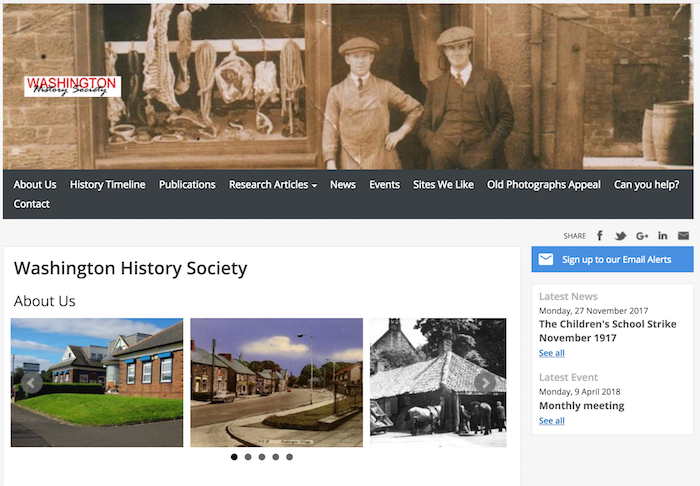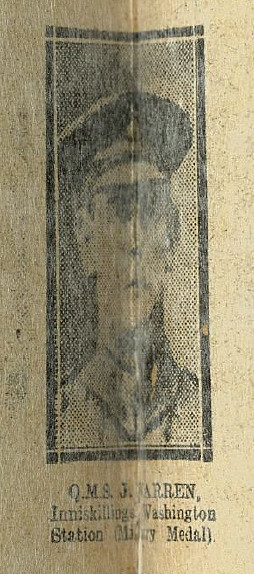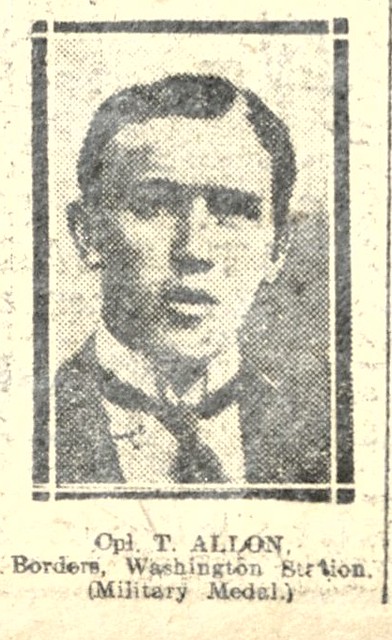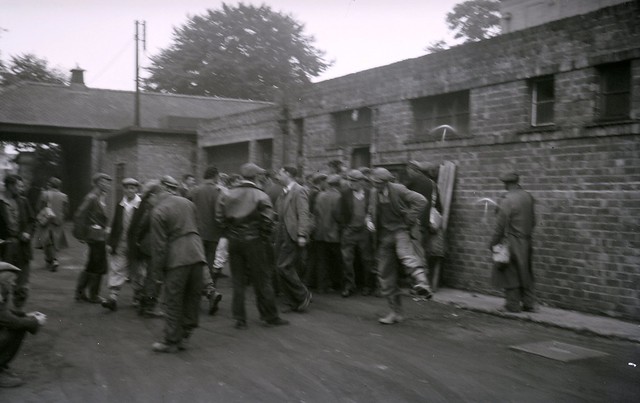Topics > Tyne and Wear > Sunderland > Washington > Washington Station (area)
Washington Station (area)
Washington Station was an area, prior to the development of Washington (UK) as a new town from 1964. It developed in the late 19th century, consisting of rows of terraced houses built around Station Road (formerlly Mill Lane), which connected Washington Village with the railway station. By 1911 there were 120 dwellings in 10 streets, home to 651 people.[1] Residents came from all parts of County Durham and beyond, attracted by jobs in the booming chemical works (Washington Chemical Works, located by the railway was established in 1842 and became the world’s largest producer of magnesia by 1900[2]), iron works, railway companies, Glebe Colliery (opened in 1904) and other nearby pits. As well as the terraced housing, the area included Biddick Mixed Junior School (built in 1892), a Wesleyan Methodist chapel, a territorial drill hall[3] and some shops. The terraced housing was largely replaced with the building of the new town.

from Flickr (flickr)
Brady's Square & Level Crossing, Washington Station, WASHINGTON, County Durham
Pinned by Simon Cotterill

from http://www.washingtonhistorys…
Belgravia Washington
- "For a very short time a neighbourhood near Washington Station was called Belgravia. The site was in that part of the area that developed rapidly in the 1840s with the …
Added by
Simon Cotterill

from IllustratedChronicles (flickr)
R Beresford- W Yorks - Washington Station
Pinned by Simon Cotterill

from IllustratedChronicles (flickr)
L.-Sgt. C H Smith - Yorks Regt. - Washington Station
Pinned by Simon Cotterill

from IllustratedChronicles (flickr)
Pte. Thomas Holmes - Border Regt. - Washington Station
Pinned by Simon Cotterill

from IllustratedChronicles (flickr)
Pte. N Hall - Northumberland Fusiliers - Washington Station
Pinned by Simon Cotterill

from IllustratedChronicles (flickr)
Pte. A Dyson - Northumberland Fusiliers - Washington Station
Pinned by Simon Cotterill

from IllustratedChronicles (flickr)
Corpl. J.W. PALMER, D.L.I., Washington Station, (Wounded).
Pinned by Simon Cotterill

from IllustratedChronicles (flickr)
J. Warren - Inniskillings - Washington Station - Military Medal
Pinned by Simon Cotterill

from IllustratedChronicles (flickr)
R. Hall - York & Lanc. - Washington Station - Military Medal
Pinned by Simon Cotterill

from IllustratedChronicles (flickr)
T. Allon - Borders - Washington Station - Military Medal
Pinned by Simon Cotterill

from IllustratedChronicles (flickr)
G. Lowrie - RE - Washington Station - Died
Pinned by Simon Cotterill


from Flickr (flickr)
Brady's Square & Level Crossing, Washington Station, WASHINGTON, County Durham
Pinned by Simon Cotterill

from http://www.washingtonhistorys…
Belgravia Washington
- "For a very short time a neighbourhood near Washington Station was called Belgravia. The site was in that part of the area that developed rapidly in the 1840s with the …
Added by
Simon Cotterill

from IllustratedChronicles (flickr)
R Beresford- W Yorks - Washington Station
Pinned by Simon Cotterill

from IllustratedChronicles (flickr)
L.-Sgt. C H Smith - Yorks Regt. - Washington Station
Pinned by Simon Cotterill

from IllustratedChronicles (flickr)
Pte. Thomas Holmes - Border Regt. - Washington Station
Pinned by Simon Cotterill

from IllustratedChronicles (flickr)
Pte. N Hall - Northumberland Fusiliers - Washington Station
Pinned by Simon Cotterill

from IllustratedChronicles (flickr)
Pte. A Dyson - Northumberland Fusiliers - Washington Station
Pinned by Simon Cotterill

from IllustratedChronicles (flickr)
Corpl. J.W. PALMER, D.L.I., Washington Station, (Wounded).
Pinned by Simon Cotterill

from IllustratedChronicles (flickr)
J. Warren - Inniskillings - Washington Station - Military Medal
Pinned by Simon Cotterill

from IllustratedChronicles (flickr)
R. Hall - York & Lanc. - Washington Station - Military Medal
Pinned by Simon Cotterill

from IllustratedChronicles (flickr)
T. Allon - Borders - Washington Station - Military Medal
Pinned by Simon Cotterill

from IllustratedChronicles (flickr)
G. Lowrie - RE - Washington Station - Died
Pinned by Simon Cotterill















